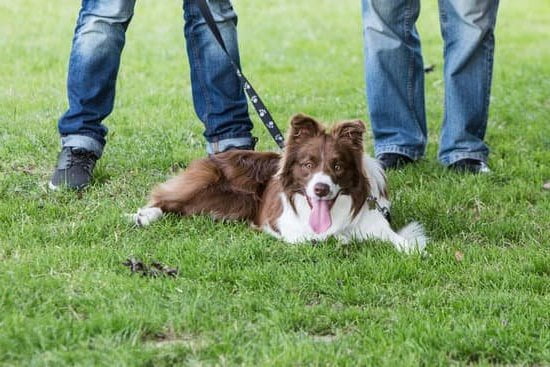Dear blog reader,
You may be considering whether to crate train your dog. The purpose of crate training is to provide a safe and secure place for your dog to rest and to inhibit him from engaging in destructive behavior when you are not able to supervise him. The key to successful crate training is to make the crate a positive experience for your dog.
The first step is to select the right size crate for your dog. The crate should be large enough for your dog to stand up, turn around, and lie down in comfortably.
The next step is to introduce your dog to the crate. Place the crate in a quiet, comfortable place in your home and put a soft blanket or towel in the crate. Encourage your dog to enter the crate by placing treats or a favorite toy inside. Once your dog is comfortable entering the crate, close the door for a few seconds. Gradually increase the amount of time your dog spends in the crate with the door closed.
The key to successful crate training is to make the crate a positive experience for your dog.
It is important to never use the crate as a punishment tool. The crate should be seen as a safe and comfortable place for your dog to rest.
If your dog has an accident in the crate, do not punish him. Clean up the mess and remind your dog that the crate is a place for him to relax and rest.
If you follow these simple guidelines, you can successfully crate train your dog.
Sincerely,
Your Dog Trainer
How To Get A Dog Leash Trained
One of the most common concerns of new dog owners is how to get their dog leash trained. It is admittedly a bit tricky getting your dog used to wearing a leash and walking calmly by your side, but it is definitely doable. Here are a few tips to help you get started.
The first step is to make sure your dog is comfortable wearing a leash. Some dogs take to them immediately, while others may need a bit more time. Start by simply putting the leash on your dog and letting him or her get used to the feel of it. Reward your dog with treats and plenty of praise when he or she behaves calmly while wearing the leash.
Once your dog is comfortable with the leash, it’s time to start practicing walking. Start by taking a few short walks in your backyard or in a quiet park. Make sure to keep your walks short and positive – if your dog starts to pull on the leash or get excited, calmly correct him or her and then resume walking.
It may take a little time, but with patience and consistent training, you’ll be able to get your dog leash trained in no time. Just remember to be positive, patient, and consistent with your training, and your dog will be walking calmly by your side in no time.
How To Get A Puppy Trained As A Service Dog
A service dog is a type of assistance dog specifically trained to help people with disabilities, such as blindness, deafness, epilepsy, and diabetes. Service dogs may also be used to provide emotional support to people with psychiatric disabilities.
The Americans with Disabilities Act (ADA) defines a service animal as “any dog that is individually trained to do work or perform tasks for the benefit of an individual with a disability, including a physical, sensory, psychiatric, intellectual, or other mental disability.”
This means that pretty much any dog can be trained to be a service dog with the proper time, patience, and training. The most important part of training a service dog is ensuring that they are reliable in public and can handle distractions.
The first step in training a service dog is to start young. Puppies as young as 8 weeks old can be started on basic obedience commands such as sit, stay, come, and down. As the puppy grows, they can be taught more advanced commands such as how to open doors, pick up dropped items, and pull a wheelchair.
The key to training a service dog is consistency. Dogs need to be taught the same commands in the same way each and every time. This helps them to learn the commands and to be able to rely on them in any situation.
In addition to basic obedience commands, service dogs also need to be trained to handle distractions. This means teaching them how to ignore other people and animals, how to stay calm in busy environments, and how to not react to loud noises.
One of the best ways to train a service dog is to use positive reinforcement. This means rewarding the dog for good behavior with treats, praise, or petting. This helps the dog to associate good behavior with positive outcomes and makes training a much more enjoyable experience for both the dog and the trainer.
It typically takes between 6 and 12 months to fully train a service dog. However, the length of time required can vary depending on the dog’s individual personality and training needs.
When a service dog is ready to be placed with a disabled person, they will be evaluated to ensure that they are a good match for the individual’s needs. The dog will also be certified as a service dog by an organization such as the Assistance Dogs International (ADI).
Service dogs can provide a great deal of assistance to people with disabilities. They can help them to live more independently and to perform everyday tasks that would otherwise be difficult or impossible.
How To Get Into Police Dog Training
Police dog training is a challenging and rewarding career. If you are interested in becoming a police dog trainer, there are a few things you need to know.
First, you need to be able to work with dogs. Police dog trainers need to be able to build a rapport with dogs and be able to train them effectively.
Second, you need to have a strong background in training and animal behavior. Police dog trainers need to be able to train dogs in a number of different disciplines, including obedience, tracking, and search and rescue.
Third, you need to be able to work with law enforcement. Police dog trainers need to be able to work with law enforcement officers and be familiar with the law enforcement system.
If you meet these qualifications, you may want to consider becoming a police dog trainer. Police dog training is a challenging and rewarding career, and it can be a great way to help make your community safer.
How Do K9 Dogs Get Trained
?
It is a common misconception that K9 dogs are simply “trained to attack.” The reality is that these dogs are highly-trained professionals who are capable of completing a wide range of tasks. Police departments, military organizations, and other law enforcement agencies use K9 dogs for a variety of reasons, including:
– Tracking criminals or suspects
– Searching for drugs or explosives
– Providing security at events or venues
– Assisting in search and rescue operations
K9 dogs are typically trained by experienced professionals who use a variety of methods to achieve the desired results. Some of the most common training techniques include:
– Basic obedience commands
– Commands for specific tasks or activities
– Training in how to respond to verbal and non-verbal cues
– Detection training
It is important to note that the training process for K9 dogs is not always easy, and it can often take months or even years to properly train a dog. However, the end result is a highly-skilled and reliable partner who can provide invaluable assistance to law enforcement agencies and other organizations.

Welcome to the blog! I am a professional dog trainer and have been working with dogs for many years. In this blog, I will be discussing various topics related to dog training, including tips, tricks, and advice. I hope you find this information helpful and informative. Thanks for reading!





